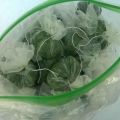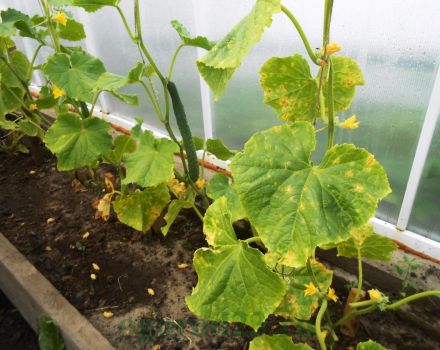How you can keep rosemary fresh at home for the winter
Rosemary is a versatile spice used for culinary and medicinal purposes. Twigs, flowers and leaves of the plant are used for cooking meat, fish, seafood, vegetables. The greens are characterized by a coniferous smell and a moderately pungent taste. The essential oils that are contained in rosemary make it possible to use it for medicinal purposes, by preparing a decoction and tea. Since greens cannot be kept fresh for a long time, consider how to preserve rosemary without losing its nutrients.
How Do I Pick a Good Rosemary?
Most housewives grow a plant on a windowsill. In this case, the greens are harvested before flowering, since it is during this period that it contains the maximum amount of nutrients. For storage, the most juicy shoots are chosen, up to 20 cm long.
The inflorescences are used for teas and tinctures. After collecting them, they should be immediately sent to dry, otherwise they will wither and lose their aroma with useful properties.
When buying a fresh spice, it is important to pay attention to its appearance. The leaves should be slightly bluish, and the leaves should adhere well to the branches. If the leaves are withered and have black or yellowish spots, you should not buy them.
When buying dried spices, first of all pay attention to the expiration date. It is no more than 6 months from the date of packaging.
It is best to buy rosemary, which is packaged in the summer.
The spice should not contain additional ingredients:
- salt;
- pepper;
- preservatives and other additives.
How to keep rosemary fresh for the winter?
Fresh spice can be stored in the refrigerator and at room conditions. It is recommended to wash the spice immediately before use.
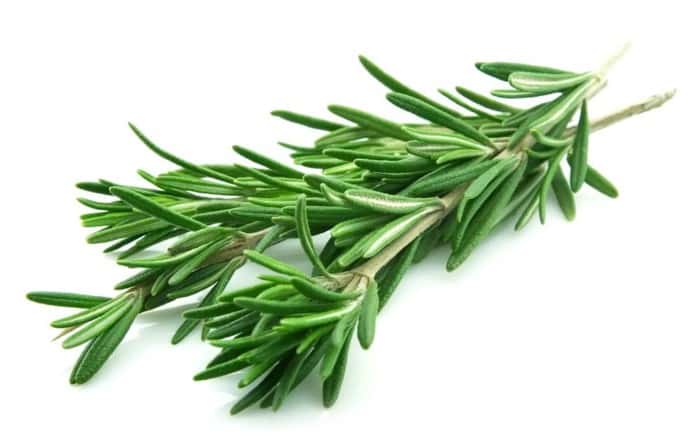
For storage in the refrigerator, the herbs are wrapped in parchment paper, and the packaging with the grass is moistened with a spray bottle until the paper is completely saturated with water. Then the spice is placed in a plastic bag and stored in the refrigerator.
The second method involves storing greens in a container with water. Use a knife to cut off the ends of the grass, put the bunch in a container with cool water, cover with a plastic bag on top. Using a paper towel, the leaves are regularly wiped off the collected moisture. The water is changed to fresh water every few days.
Note! The optimal storage conditions for rosemary are a temperature not higher than 5 degrees and high humidity. To keep the spice as long as possible, it is regularly checked for tainted leaves and twigs.
Drying the plant
For long-term storage and use of greens in the winter, they are dried.This is done in several ways, each of which has its own advantages.

On air
It is best to dry the plant in a well-ventilated and dark place. You can lay the spice under awnings outside.
It is important not to let the sun's rays hit the rosemary, otherwise the color and most of the nutrients will not be preserved.
Initially, the greens are sorted out, discarding the spoiled leaves. Then the selected rosemary is laid out on thick paper or cloth, and turned daily. You can dry it with separate leaves or in small bunches. In the second case, they are hung down by foliage in the attic.
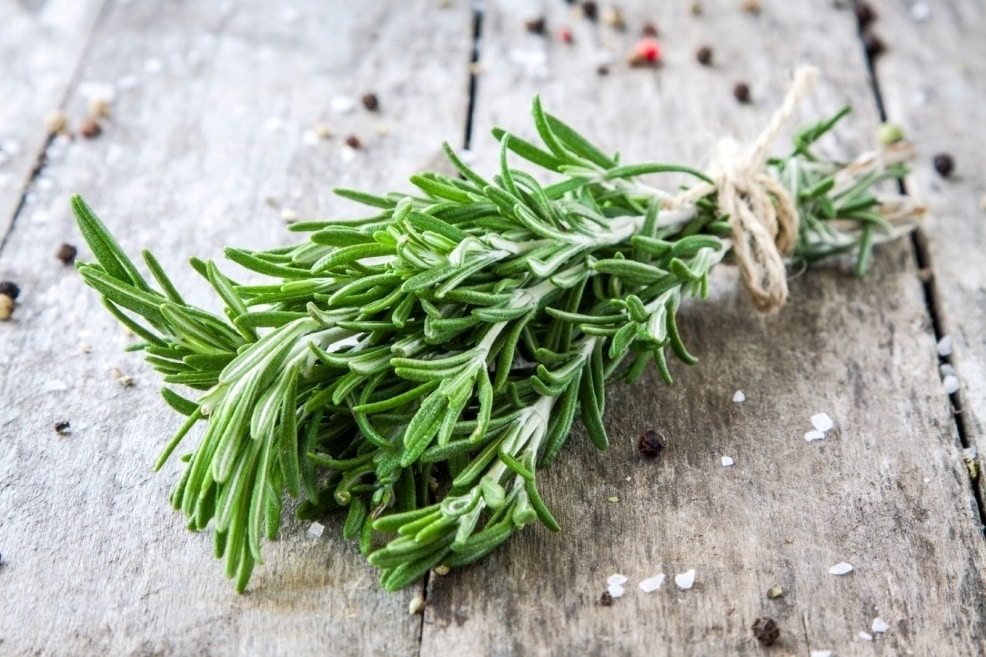
After 1.5-2 weeks of drying, the rosemary will be ready for use.
In the dryer for vegetables and fruits
Many gardeners purchase special electric dryers for quick drying of greenery. To do this, the branches of the plant are cut into small pieces, about 5 cm each, and then laid out on the grates.
The drying temperature should not exceed 40 degrees, otherwise the plant will lose most of the nutrients.
The inflorescences are dried in a similar way, but 2 times faster.
In the oven
Since it is difficult to control the heating temperature in the oven, it is not easy to dry rosemary properly this way. But in the absence of a special dryer, the oven is used for these purposes, setting the minimum heating in it.

The oven door is left a little ajar, and the baking sheet with rosemary is placed on the top shelf. Greens are dried for about 4 hours.
Other ways to harvest rosemary
The above methods of storing greens are far from the only ones. Rosemary lovers constantly come up with new ways of harvesting, and share their recipes with others.
Frozen in oil
This method uses olive oil and ice containers. Rinse the rosemary sprigs first, then cut into small pieces. Arrange them in shapes, leaving a little space in each cell. After all the cells are filled with greens, they are poured with olive oil and put into the freezer. In this form, greens can be stored all winter. Take out cubes as needed.
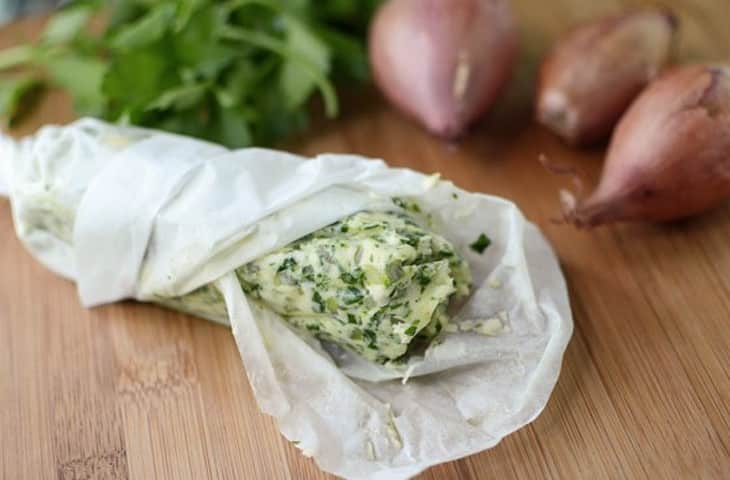
Many housewives freeze the spice without olive oil. The twigs are folded into plastic containers and removed when necessary.
Paste
This storage method has long been loved by gourmets. The only thing is that it involves the addition of additional ingredients.
- Put 200 g of rosemary in a blender bowl.
- Add lemon zest.
- A couple of garlic cloves.
- Ginger and other ingredients or herbs, depending on taste.
- All this is poured into a glass of olive oil and crushed.
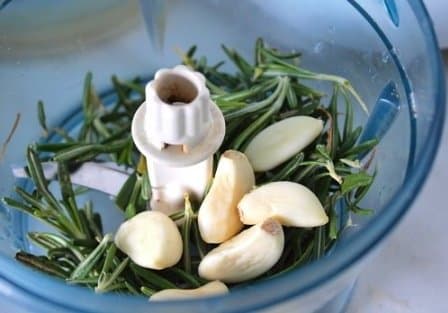
The finished mixture is placed in glass jars and stored in the freezer. Use the paste for seasoning various dishes, adding 1-2 teaspoons.
Vacuum
In the conditions of home preparation, special vacuum machines are often used. This is the most convenient way to store greens. To do this, it is enough to pack the branches of the plant in small vacuum bags and place them in the refrigerator. Many housewives prefer to mix and store rosemary with other herbs. In the refrigerator, evacuated greens are stored for up to 2 months. For longer storage, the bags are placed in the freezer.
There is another interesting way to get the aroma and flavor of rosemary in ready-made meals. Several sprigs of greens are dipped in a bottle of sunflower oil or vinegar. After 1.5–2 weeks, the liquids will acquire a characteristic spicy aroma.
Thus, rosemary can be harvested for the winter in various ways. Everyone can choose the most suitable one for themselves. The main thing is to adhere to all recommendations. Frozen rosemary must not be re-frozen. Therefore, they get the spice strictly in the portions that are required for cooking.







